Testing fast USB3 camera - Ximea xiQ MQ013MG-E2
Ximea xiQ MQ013MG-E2 is the first model of USB3 machine vision cameras offered by Ximea. Thanks to the fast USB3 interface this model can record 1280x1024 frames with the speed of 60 frames per second. The whole set is priced at around 330 EUR, which makes it very very hot camera. In this camera I'll test and describe this camera and its capabilities.
Ximea xiQ cameras are new on the market. The whole range will be using modern CMOS sensors with global shutters (very desired in fast imaging as well in Solar System imaging). The first model - MQ013MG-E2 is equipped with a mono e2v CMOS sensor EV76C560, which already have been tested in astrophotography in IDS Imaging cameras. Its quite capable sensor, comparable with performance to ICX445. It has a quite big diagonal 1/1.8" (like in DMK51) and is very handy for Lunar and Solar imaging.
On full frame this camera can record with 60 FPS where USB2 Chameleon with similar pixel amount offers only 18 FPS. Such fast data transfer requires fast HDD and good USB3 host controller.
Images
SCT C11, f/10, red longpass filter: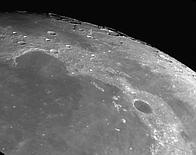
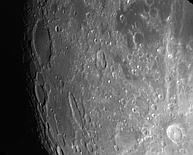
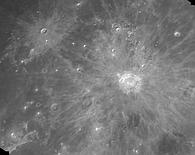
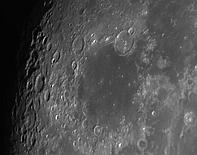
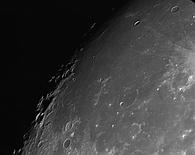
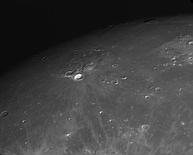



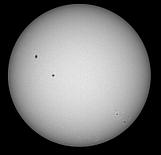
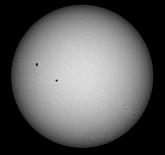
Hardware

The camera is very small, probably smaller than Flea3. The housing is solid metal. The sensor area is enclosed with a protection cover glass. On the back there is a Micro-B USB3 connection socket. In the set there is a USB3 industry grade cable that has extra screws on the side that can be screwed into the camera.

The camera has a standard C/CS thread so there is no problem with getting nosepieces or other adapters for it. The standard 1,25" nosepieces for machine vision cameras will work.



USB3 Interface
xiQ cameras use the USB3 interface a lot. With the camera you get a Fresco Logic FL1009 PCI card which is a USB3 host card and provides two USB3 ports. This host is compatible with the camera. Some other USB3 hosts may not work. When I tried to use the camera via USB3 ports on a Intel motherboard it freezes the system on camera initialization. There is no data how many USB3 hosts available in laptops will work and how many won't. For desktop PCs you got the Fresco PCI card.

Fast data transfer requires that a fast hard disk to save all the data. A good quality 7200 RPM disk will handle this camera with no problems (unless connected via some old low performance socket). For future models like those with CMV4000 sensor a fast SSD will be probably required.
Software
To start using the camera you need to install the XIMEA API Software Package. You will also get two apps handy for first camera testing. Ximea Camera Viewer is just a live viewer of the image capture by the camera. It can't record. New CCD Test application can be used to test settings and some very basic image capture. It can capture frames and save it as TIFF images. In the "Camera Setup" use "Save Image" to save a single image into an empty folder. Then you can use multiple times the "Save 100 Images" option hidden in top menu under "File". It's not the best thing but it works for a "quick test".

If you want to use the Fresco Logic FL1009 PCI card then you also have to find and install drivers for it. The drivers are available via few forums and drivers sites. Without drivers Windows won't be able to handle it.
For real Solar System astrophotography some serious software support is needed. I've worked with SharpCap author to bring xiQ support into his app. After few days of testing and bug fixing SharpCap got ximea API support and can now record SER files. Those files then can be stacked in most if not all stacking software. 500 frame SER file is bit more than 600 MB in size. At 60 FPS it's a quick recording.

Imaging performance and usage
The camera is equipped with quite good EV76C560 sensor. It offers rolling and global shutter, but in this camera it can work only in global shutter mode. The global shutter has much higher read noise but you won't get any artifacts caused by rolling shutter (and they do show up if the image is unstable - like under not so good seeing). With low gain values the noise in the camera isn't a problem, nearly invisible. On very high gain values it's quite noticeable and may cause the final images to be noisy too. For Moon or Sun imaging it's not a problem as they are bright so lowest gain values are usable. For planetary imaging higher gain values will be needed. For typical RGB and broad IR imaging it should work well. For special imaging like very dim methane band imaging it won't be the best choice.
Quite big diagonal (1/1.8", like in DMK51) makes lunar and Solar imaging easier - more surface will be in the camera field of view. At full frame it already offers 60 FPS. For planetary imaging if you choose a smaller subframe you will get even faster speed limits. So if you want something versatile - for planets as well for Moon and Sun this camera will work.
As for the sensor itself it have been tested before in IDS Imaging cameras. French astronomers used a big Lunt and did a test on test na astrosurf.com (there the rolling shutter gave some artifacts, but global turned out clean). I've tested IDS camera too. You can check the UI-1245 review.
Summary
Advantages
- Low price
- Very fast USB3 interface
- Good at planetary imaging as well as for Lunar and Solar imaging
Disadvantages
- May not work with all USB3 hosts
- Capture application support is on early stage
- High noise on high gain
At the price of around 330 EUR the camera is very hot and affordable. It costs less than a PGR Chameleon on USB2 while it offers much more. The one serious unknown is the compatibility of laptop USB3 hosts (for PCs there is the Fresco PCI card). Either so it's a very interesting camera.
If you want to buy this camera contact Ximea sales. At the moment there is no other source of those cameras (but maybe if they turn out nicely some astro shops will start reselling them).
Future models, especially CMOSIS CMV4000 won't be as cheap as this model. But still 1" diagonal of CMV4000 is something H-alpha imagers want. USB3 is the fastest interface that can be easily used for astrophotography (right now you can easily get CMV4000 cameras but on CameraLink interfaces which require also expensive CameraLink frame grabbers).
Comment article